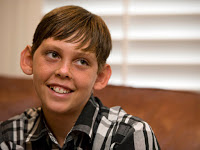Part 8: Teaching Strategies for Students with Asperger’s and High-Functioning Autism – Restricted Range of Interests
Kids with Asperger’s (AS) and High-Functioning Autism (HFA) have eccentric preoccupations or odd, intense fixations (e.g., obsessively collecting unusual things). They tend to: ask repetitive questions about interests; follow own inclinations regardless of external demands; have trouble letting go of ideas; relentlessly "lecture" on areas of interest; and, sometimes refuse to learn about anything outside their limited field of interest. Programming Suggestions for Teachers: 1. Use the AS or HFA youngster's fixation as a way to broaden his repertoire of interests. For example, during a lesson on rain forests, the student who is obsessed with animals can be led to not only study rain forest animals, but to also study the forest itself since this is the animals' home. The student can then be motivated to learn about the local people who are forced to chop down the animals' forest habitat in order to survive. 2. Use of positive reinforcement selectively

